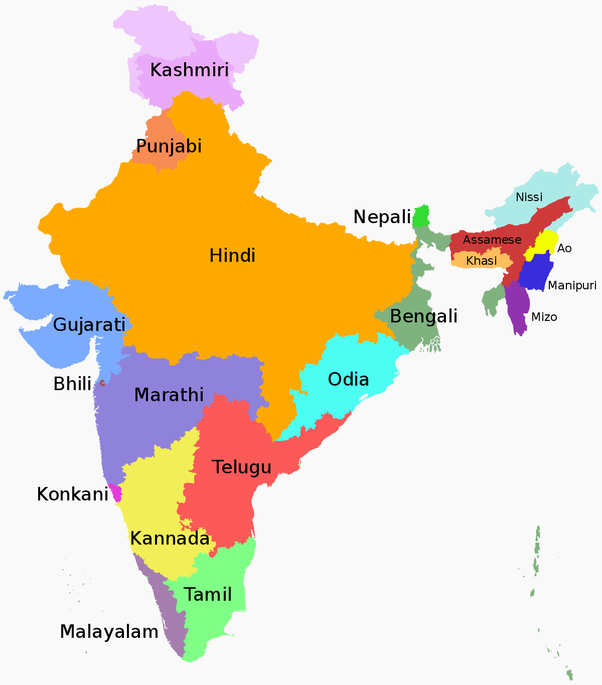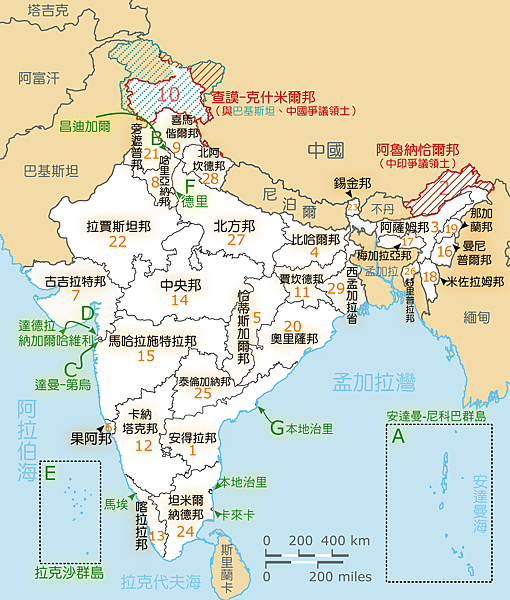From India's Dilemma to Inner Mongolia's Protests—Can Multiple Languages Live in One Country?
In recent months, the Chinese government's bilingual policy to strengthen Chinese education in Inner Mongolia has been criticized from all walks of life and sparked numerous protests in Inner Mongolia. On August 26, the Inner Mongolia Department of Education issued the "Implementation Plan for the Use of State-Compiled Chinese Textbooks for the First Grade of Primary Schools and the First Grade of Junior Middle Schools Teaching Ethnic Languages in the Region", requiring that "the first grade of primary schools taught in Inner Mongolian ethnic languages begin to use the national common language. Textbooks. In the next two years, the politics and history classes of the first grade of primary school will also begin to be taught in Chinese.” Because the plan tries to destroy language equality and create ethnic conflicts, many people suspect that the Chinese government is trying to copy the next Xinjiang.

This is not new news. I believe many people have heard of the bad behavior of the Chinese government in threatening and persecuting activists in Inner Mongolia in order to enforce the bilingual policy. What I am more interested in is why the Chinese government insists on carrying out the sinicization campaign to the end? Has the second-generation ethnic policy that promotes bilingual education gone astray in its implementation? And the title of this article: Can a country accommodate multiple languages?
India, also a big country in Asia, has been troubled by problems caused by its many languages since its founding in 1947. Compared with China, where the Han nationality accounts for more than 90%, India's ethnicity is much more complicated, which has brought about various inconveniences and troubles in language. Although there are also seven major dialects in China, there is a joke that "one village cannot understand each other", but there are more than five languages in the language family alone, and the number of languages is as many as 121 (counting the languages with a native speaker population < 10,000) It can even be doubled by more than ten times), compared with India, it is still pale in comparison.
Some people who do not understand Indian languages are prone to some misunderstandings. Here we first clarify the more common ones:
- Official language (official language) and national language (national language) are not the same thing . The official language refers to "the working, political and legal language formulated by the government", while the national language refers to "the language that can represent a region in fact or in law".
- There are only two official languages in India: Hindi and English . The remaining twenty languages are called scheduled languages and are the official languages of the state.
- Not all Indians know English.
- The "Hindustani" we usually see is not a general term for Indian languages, but a general term for Hindi, Urdu and derived dialects.
- Although Indian languages look similar to foreigners, most of them are not interlinked . Except for a small number of languages, there is no such thing as learning one subject and mastering three subjects.

After the founding of India, the first priority is to write a constitution. In terms of the formulation of the official language, there has never been a definite number. The new government proposed to make Hindi the sole official language of India. Dhulekar, one of the main figures of the Indian national movement, even stated that "people who do not understand Hindustani are not worthy of staying in the Constitutional Conference and have no right to stay in India." As soon as this proposal came out, it attracted opposition from speakers of Telugu, Tamil, and Marathi in South India, as well as speakers of Bengali and Kashmiri in North India. The reason is very similar to the cause of the incident in Inner Mongolia: the central government's promotion of monolingualism in a multi-ethnic country is the cleansing of ethnic minorities. But the South Indian member's proposal at the Constitutional Conference was not exactly pleasing either: making English the official language of India. Using the British language as the official language is ironic from an Indian point of view. It is equivalent to a continuation of colonial culture, and naturally it has received a lot of opposition.
The first version of the constitution was written in 1950, and fifteen major Indian languages were included in the scheduled language; in 1956, India was divided into different states based on language, and English became the main language of the education system. It is worth mentioning that Gandhi did not approve of this approach. His ideal was a pure India based on the Hindustani language. In 1963, the government issued a formal official language act . The basic content of the bill is as follows:
- India will not have any national languages
- Hindi and English will be the official languages of India, with English being used as the language of inter-state communication and the language of law
- States can decide their own official language
- Hindi version of government/state act is higher than English version of government/state act

Five years later, in 1968, the Indian Ministry of Education introduced the Three-Language Formula. The three languages are Bangla, Hindi, and English . The original intention of the three-language policy is to encourage Hindi-speaking students to learn another Indian language, and non-Hindi-speaking students can learn Hindi that best represents India, while using English as a communication bridge, which can be implemented in practice. There was a lot of distortion and protest in the process. The first is that Tamil Nadu refuses to include Hindi in the compulsory school curriculum, and the second is that many states have changed one of the three languages to German, Spanish, French and other languages that are more popular in the international community. Although the number of speakers of Tamil is far less than that of Hindi, due to the state government's vigorous promotion of Tamil, it has gained a high status in Indian society and is an absolute example of "crying children get milk". good example.
From this point of view, the three-language policy is a complete failure in practical application. India's language policy is still based on the 1963 Act. It is precisely because of the failure of the trilingual policy that the use of English in India is much lower than most people imagine. Among them, the English penetration rate in South India is higher than that in North India, and people with higher education are more likely to speak fluent English than those without higher education. Compared with the language itself, English is more like a symbol of dignity. This can be seen in Bollywood movies. For example, the fiancé of the heroine in Bollywood who is covered in famous brands likes to speak a few words of English from time to time, and the wealthy family served by the hip-hop male lead in India uses a lot of English vocabulary when communicating.

Judging from the history of India's language policy, a unified language is more likely to provoke ethnic antagonism than allowing multiple languages to exist . Language is only a medium of communication, and the idea that a single language can break the peace between nations is a bit of a fantasy. If a country's only definition of being strong is a single nation, a single language, and a single political ideology, then sooner or later the country will be isolated internationally. Such a way of thinking that "people who are not of my race must have different hearts" has long been a product of the old age. India's language balance is indeed not perfect and even has many loopholes, but there are indeed many differences in language between India and China that cannot be directly compared. Relatively speaking, the language problem in China is actually much simpler.
The official language of China is Chinese, and at least 90% of the people in this land speak Chinese as their first language. Even so, the government has no right to deprive other peoples of their freedom to learn their own languages. I am very supportive of the concept of bilingual education. What I oppose is the imposition of Chinese into other ethnic groups under the guise of bilingualism . Even from a political point of view, this move by the CCP is very stupid. To use a favorite phrase used by foreign propaganda is "lifting a rock to shoot yourself in the foot". It is only natural that a bilingual policy hastily launched without a clear answer to the human rights issue in Xinjiang. Before that, Inner Mongolia was friendly with other regions without any conflicts. The arrival of this uninvited guest directly disrupted the peace and caused the people of Inner Mongolia to be dissatisfied with the CCP.
So finally allow me to briefly answer the question I asked at the beginning: Can a country accommodate multiple languages? The answer is yes, but the difficulty of governance will increase in proportion to the language population and the number of languages . India's language complexity is the most difficult in the world, but its language policy avoids unnecessary confusion as much as possible. There are only more than 80 languages in China, the main language of which is Chinese, which is naturally easier to manage than India. The problems in Inner Mongolia could have been avoided.
Data link
Indian Language Education Policy
Introduction to Indian Language Policy
Like my work? Don't forget to support and clap, let me know that you are with me on the road of creation. Keep this enthusiasm together!
